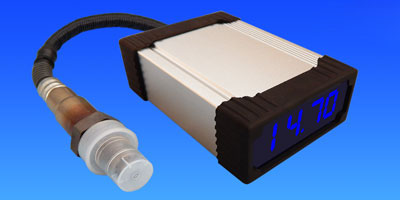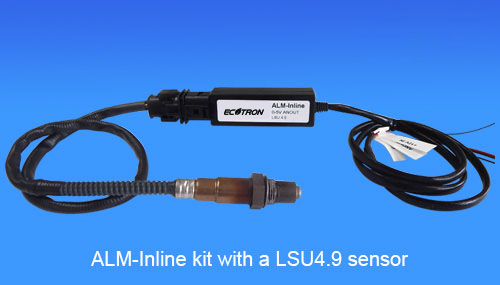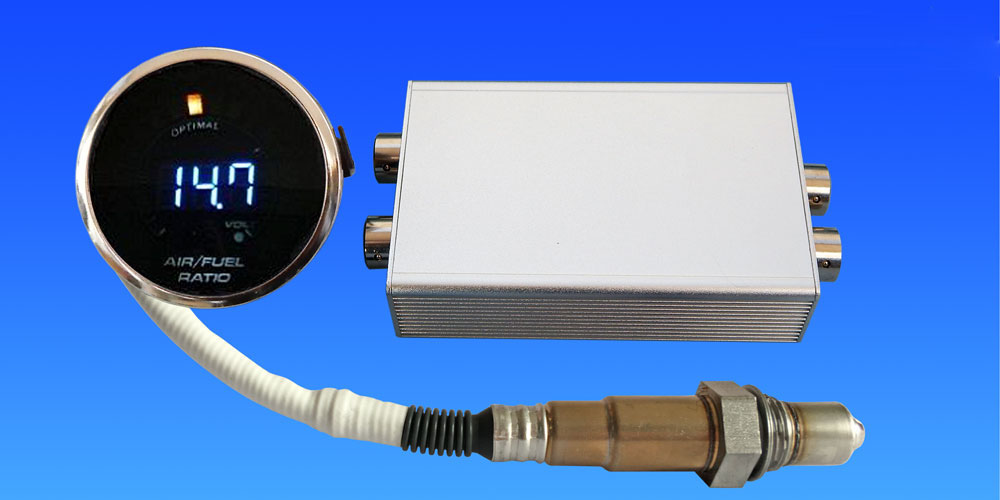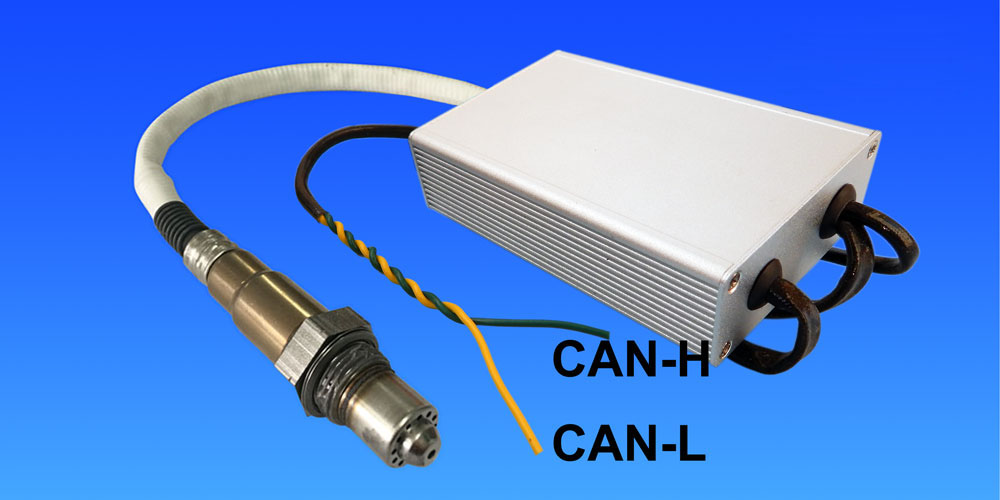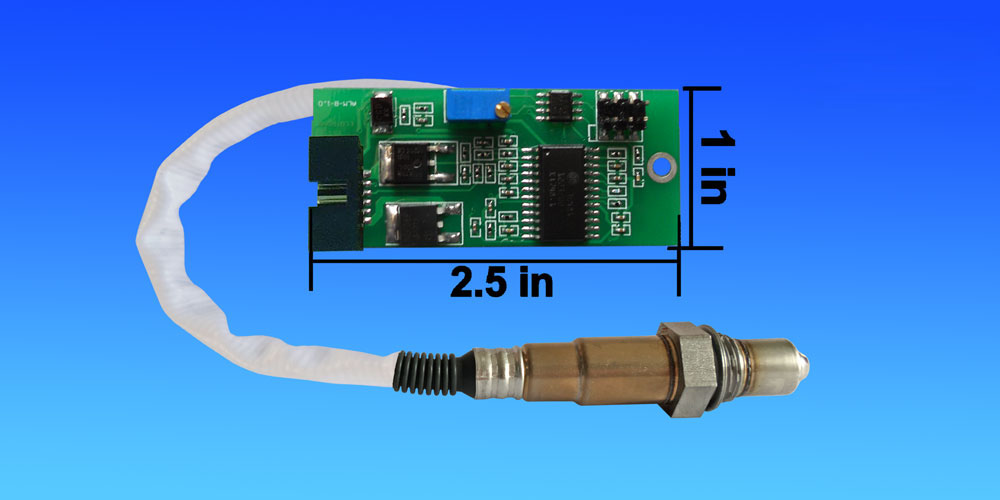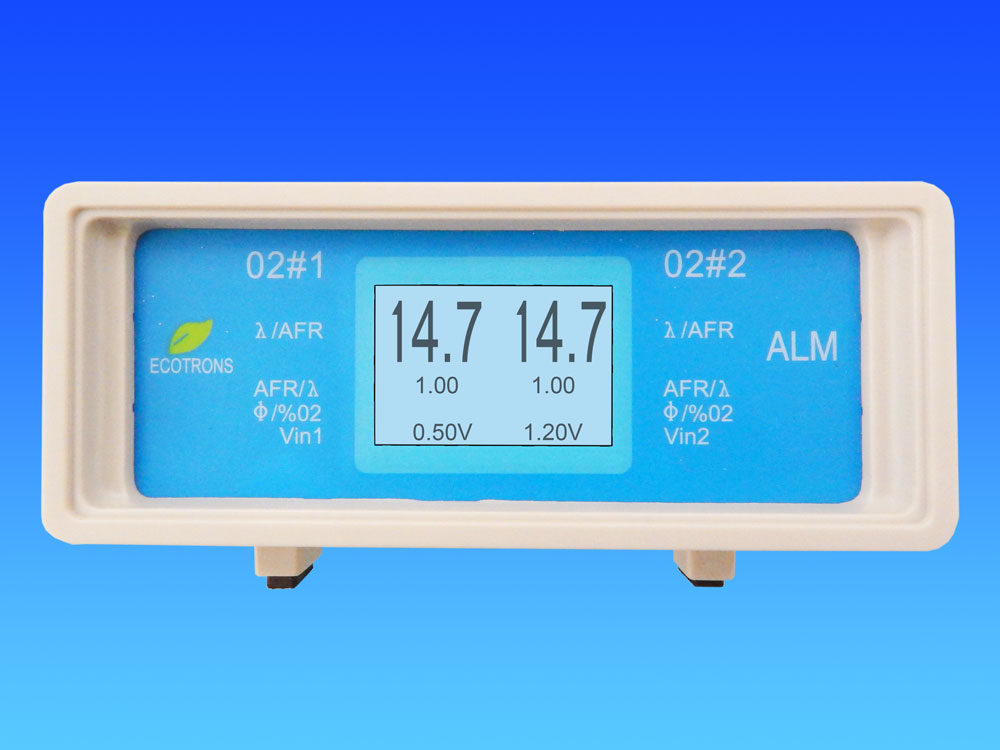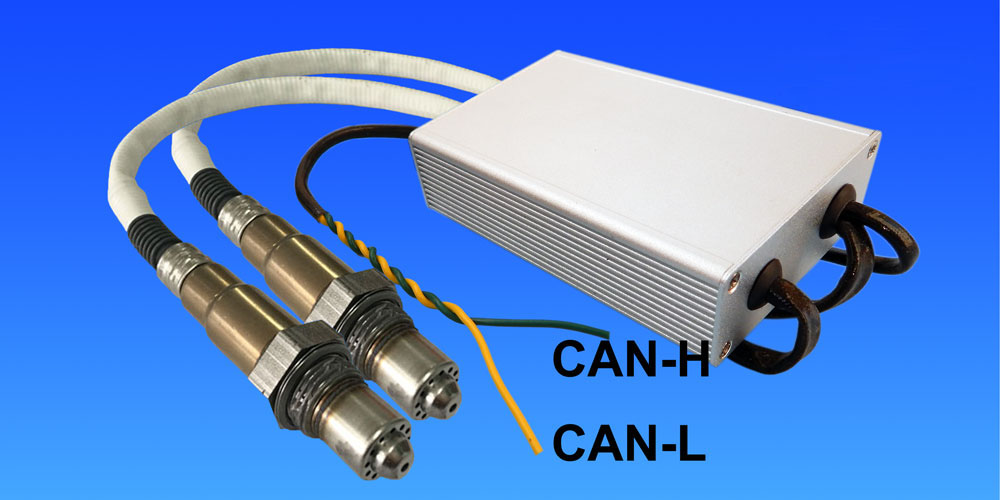While most wideband controller manufacturers are still using LSU4.2 or LSU4.9 sensors for their flagship products, Ecotrons ALM has again taken the lead to release the most advanced wideband control system with Bosch's latest and greatest wideband O2 sensor: LSU ADV. Click here, if you want to know immediately "What set ALM apart from other wideband controllers?" To meet different market need, we have developed our ALMs into the different packages.
This is a new versoin of ALM ALM-inline . The controller is part of the cable, therefore called "inline". It is the smallest version yet rugged for vehicle applications. The output of ALM-inline can be 0-5v analog, CAN bus, or RS232, or RS485 bus. The above picture shows the original ALM-G with a gauge. It is mainly for motorsport applications, where a compact controller and a sleek gauge are preferred. ALM-s controller box has the size of 4"x2.6"x1", or similar to a business card size. It has a primary 0-5v linear analog output which can be used as the feedback control signal for an ECU. It also has the second analog output to a 52mm digital gauge. You can opt out our gauge and use a third party gauge which takes the 0-5v analog output.Above is our CAN bus version, ALM-CAN. CAN bus communication is the widely used data exchange method in the automotive industries. This is the professional way for automotive control systems, especially an engine control unit (ECU), to get the Lambda / O2 concentration from the wideband controller. CAN bus communication eliminates the DAC (Digital to Analog Converter) and then ADC (Analog to Digital Converter) conversions, and therefore eliminates 2 big error sources, and keeps the original signal accuracy. Compared to the CAN bus, 0-5V analog output is an amateur method.
Below is an OEM version of the ALM, ALM-board . It is a mini-circuit board that can be easily built into any OEM controller. The board size is 2.5"X1"x0.5". It has its own LSU sensor connector, it gets the power from the main controller. It feeds back the Lambda or O2% to the main controller, either via 0-5V or CAN bus, or serial communication, at your option.
Below is another ALM version for lab environment, ALM-LED. The built-in, big and high resolution LED display makes it a perfect instrument for dyno tuning. This one also has 0-5V analog or CAN bus option.
Here is a dual-channel version: ALM-II. It includes 2x LSU 4.9 sensors, driven by 2x Bosch CJ125 chips. It is typically used for V-shape engines, like V6, V8 or V10 engines, etc. It has all features of ALM, and more. It replaces ALM's LED display with a LCD and display more info: lambda or AFR, O2 concentrations in percentage (O2%), Analog inputs, etc.
Recently, we added a dual sensor version of ALM-CAN-II. This version of ALM uses the same CAN bus protocols, but supports 2 LSU4.9 sensors. It is suitable to run with a V6 or V8 engine, where the 2 banks of the engine requires 2x O2 sensors. This dual sensor wideband controller is the more cost effective solution for the V-shape engines. One stone, two birds.
For details of each version of ALM, click the below:
 ALM-LSU ADV (New)
ALM-LSU ADV (New)
 ALM-Gauge
ALM-Gauge
 ALM-CAN & ALM-CAN-II
ALM-CAN & ALM-CAN-II
 ALM-Board
ALM-Board
 ALM-LED
ALM-LED
 ALM-RS485
ALM-RS485
 ALM-II (dual-channel)
ALM-II (dual-channel)




